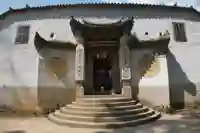

Image Missing
ha giang
Getting to know...
The palace is located in the Sa Phin Valley, Dong Van Geopark. The palace was the residence of Vuong Duc Chinh and his son Vuong Chi Sinh. Built between 1898 and 1903, this 64 room palace is set in 3 hectares of land. The cost of construction materials alone was 15,000 pieces of white silver, quite a significant sum at the time. The design of the main building is traditional Chinese style siheyuan courtyard with 4 wings surrounding a central area.
Making of a king
Vuong Duc Chinh had arrived in Vietnam with little money. He joined the Hmong in their fight against the mercenary Black Flag Army while simultaneously amassing a fortune in the opium trade. The Black Flag Army were eventually defeated and Vuong Duc Chinh ascended to Hmong King status, as a much needed leader to govern the local land.
Opium trade
The Dong Van area at this time was a major producer of opium - many hundreds of tons per year in fact. Vuong Duc Chinh amassed significant wealth and power with his tenacity and sharp business skills. He sold to both the Chinese and the French as well as receiving commissions from other opium traders / farmers of the region. Inside the palace you can see wooden carvings of the opium flower all over as a homage to the source of wealth.
Palace location and construction
The decision to build the palace was made in 1890. It was felt so important to choose the right location that Vuong Duc Chinh hired geomancer called Troung Chieu who spent several years searching - eventually deciding eventually on the Sa Phin Valley. Located on a mountain with a tortoise back shape, this house was expected to bring wealth and prosperity for generations to come. That was the plan anyway…
Decline of a house
Between 1900 and 1950 the region was hotly contested by all sides. Vuong Duc Chinh wishing to remain autonomous, the French, Chinese and Vietnamese all with desires for expansion and control of the region. Eventually Vuong Duc Chinh sided with the Vietnamese, however there is no place for royalty in a communist society and so the power he and his family previously enjoyed, evaporated overnight along with the wealth they had accumulated. The house was given to the Vietnamese in the 1950s and had a light restoration in the 1990s. His descendants were graciously awarded land by the Vietnamese government and 30m vnd in cash each to help them transition to their new lives.